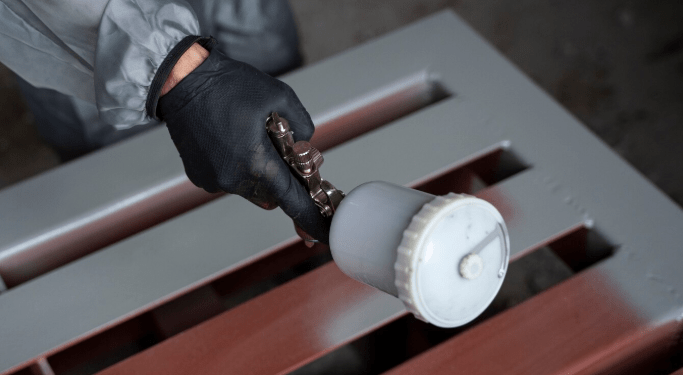The industrial sector has always been at the forefront of innovation when it comes to material durability and performance. One area that has seen remarkable advancements is coating technology. Coatings serve as a protective barrier against wear, corrosion, and other environmental factors, ensuring that products can withstand demanding conditions. In this blog post, we’ll take a closer look at the newest coating options in the industrial sector, from advanced powder coatings to cutting-edge polymer blends.
Industrial Powder Coating
Industrial powder coating has been a go-to choice for years, offering excellent protection and a smooth finish. However, recent developments in powder coating technology have made it more versatile and efficient than ever before. New formulations now offer improved corrosion resistance, better UV stability, and a broader range of finishes. These coatings are designed to meet the specific needs of industries ranging from automotive to aerospace.
One significant advancement is the introduction of powder coatings that can be applied in more challenging environments, including extreme temperatures or high humidity. This makes powder coating even more suitable for a range of industrial applications. Additionally, these newer coatings are available in a variety of colors and textures, making them both functional and aesthetically pleasing. Industrial powder coating services are increasingly in demand as businesses seek high-performance, long-lasting solutions for their products.
High-Performance Polymer Coatings
Polymer coatings have made a huge impact on the industrial sector, especially in areas where traditional coatings fall short. These coatings are made from synthetic polymers, offering superior durability and resistance to harsh chemicals, extreme temperatures, and UV radiation. The latest polymer coatings are more flexible and offer a smoother application process, reducing the chances of imperfections and defects.
Industries like oil and gas, pharmaceuticals, and chemical manufacturing have seen significant benefits from using these coatings. The resistance to chemical corrosion is particularly important in environments where equipment is exposed to corrosive substances regularly. Furthermore, polymer coatings can be applied to a variety of materials, including metals, plastics, and composites, making them highly adaptable across industries.
Ceramic Coatings
Ceramic coatings are another exciting development in the industrial coating space. These coatings are known for their exceptional hardness and thermal stability. The application of ceramic coatings allows materials to withstand extreme temperatures without breaking down. This makes them ideal for industries that deal with high-heat environments, such as manufacturing, automotive, and energy sectors.
Beyond heat resistance, ceramic coatings also provide excellent abrasion resistance, which helps protect surfaces from wear and tear. This can significantly extend the lifespan of machinery and other industrial products. Ceramic coatings can be used on everything from engine components to industrial equipment, offering a reliable solution for enhancing durability and performance in demanding applications.
Nano-Coatings
Nano-coatings are one of the most innovative developments in the field of coatings, providing protection at the molecular level. These ultra-thin coatings are applied using nanotechnology, which allows them to bond with the surface of materials at a microscopic level. As a result, nano-coatings offer enhanced resistance to water, dust, oil, and other contaminants, while also providing antimicrobial properties.
What sets nano-coatings apart from traditional coatings is their ability to offer protection without altering the appearance or feel of the material. This makes them a popular choice in industries that require the integrity of the original surface, such as electronics and medical devices. Furthermore, nano-coatings are highly versatile, offering protection in both indoor and outdoor environments.
Eco-Friendly Coatings
As industries continue to evolve, there is an increasing demand for sustainable solutions. The latest trend in coating technology is the development of eco-friendly coatings that offer high performance while minimizing environmental impact. These coatings are designed to be free from harmful chemicals, such as volatile organic compounds (VOCs), which are commonly found in traditional paints and coatings.
The push for greener coatings is particularly relevant in industries where environmental regulations are stringent. Many eco-friendly coatings are water-based, reducing the need for solvents that can contribute to air pollution. Additionally, these coatings are often more energy-efficient to produce and apply, making them a sustainable choice for businesses looking to reduce their carbon footprint.
Conclusion
The industrial sector continues to benefit from innovations in coating technologies, with new options providing better performance, durability, and sustainability. Whether it’s industrial powder coating, advanced polymer blends, or eco-friendly alternatives, the latest coatings are helping industries stay ahead of the curve. As businesses seek to improve the longevity and performance of their products, these new coating options will play an essential role in shaping the future of industrial materials.









